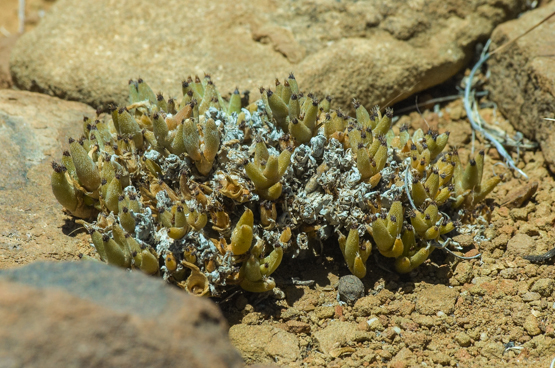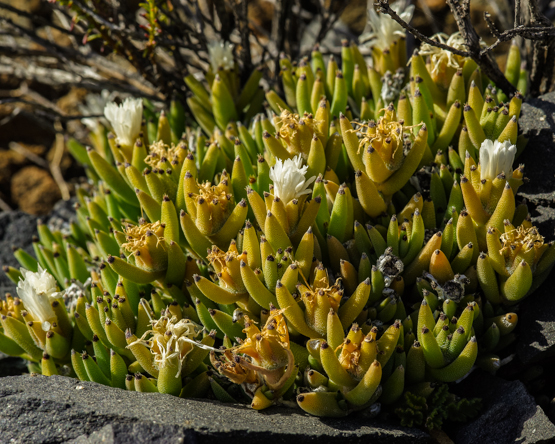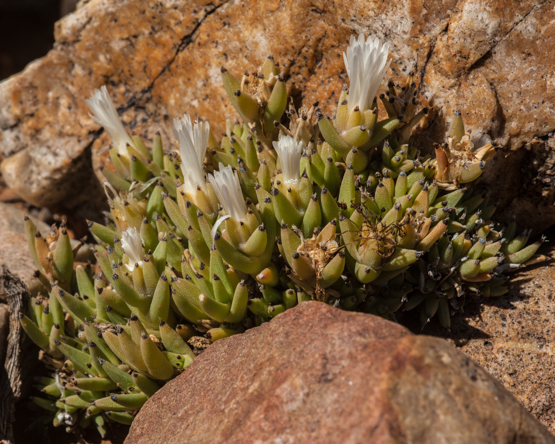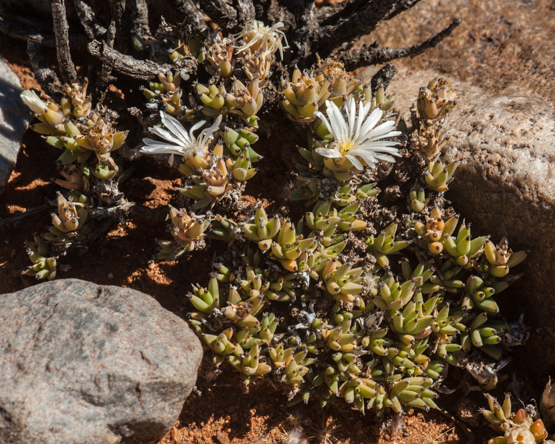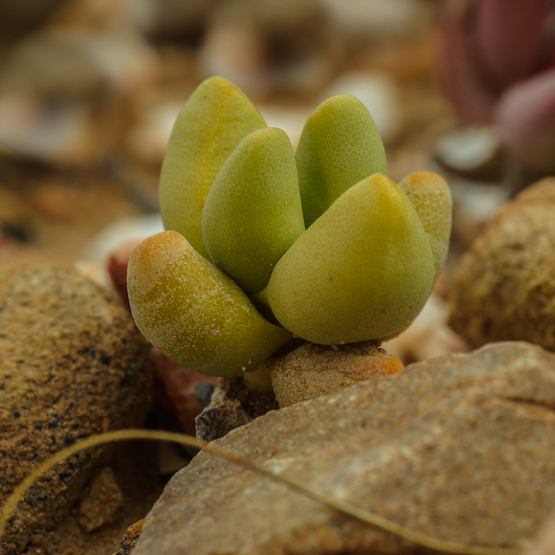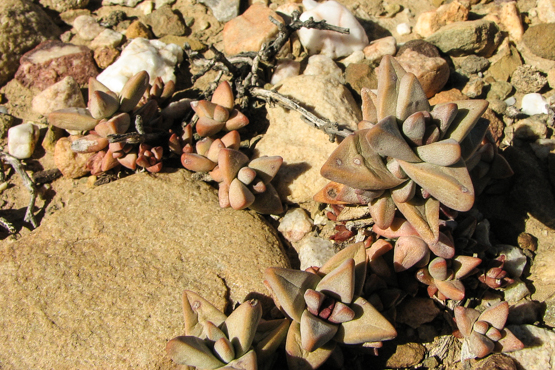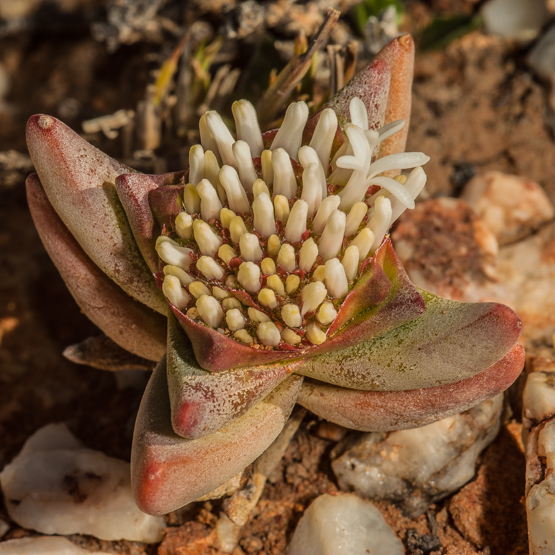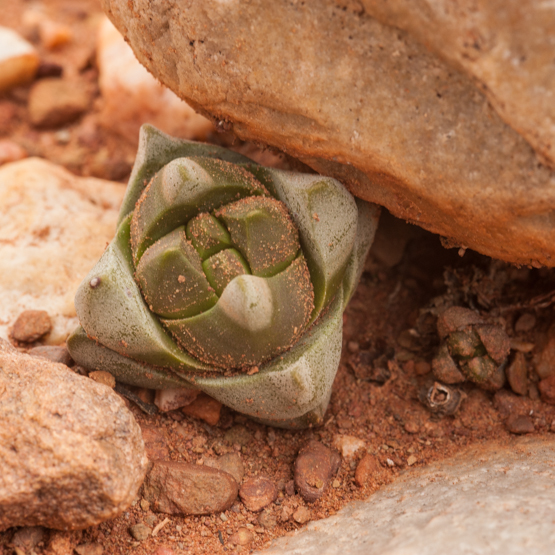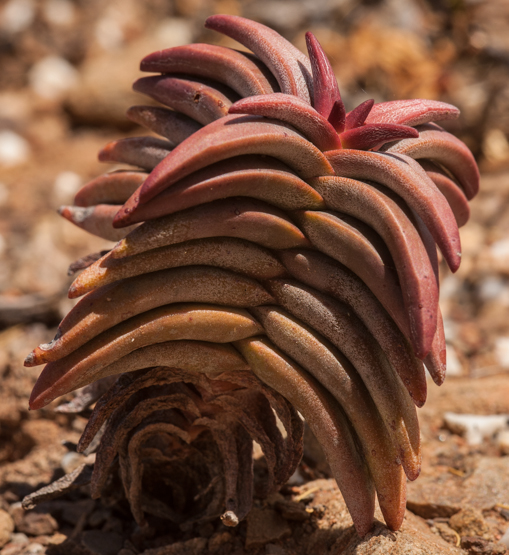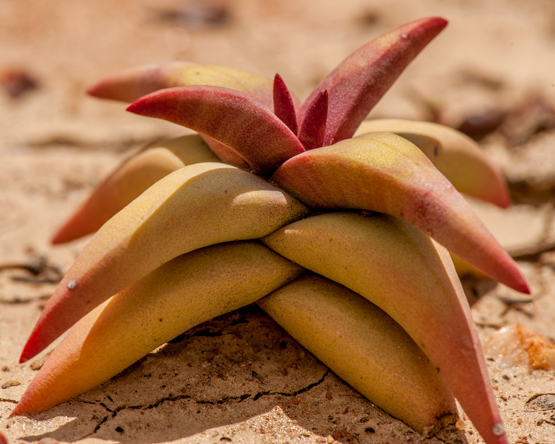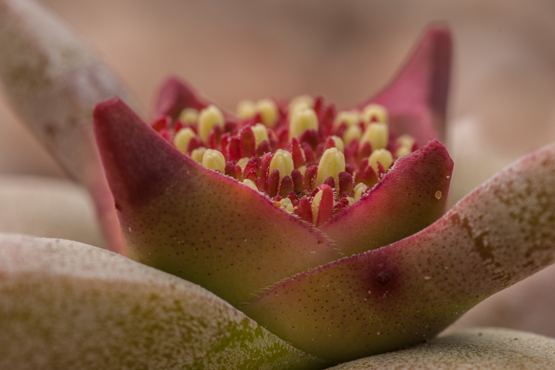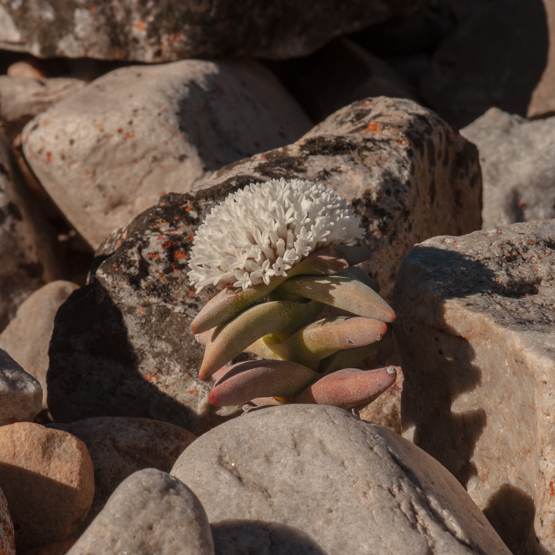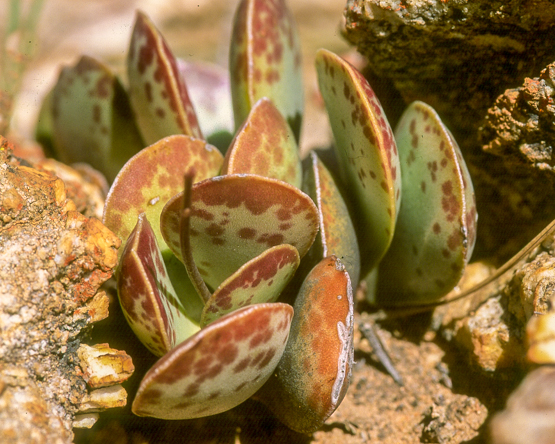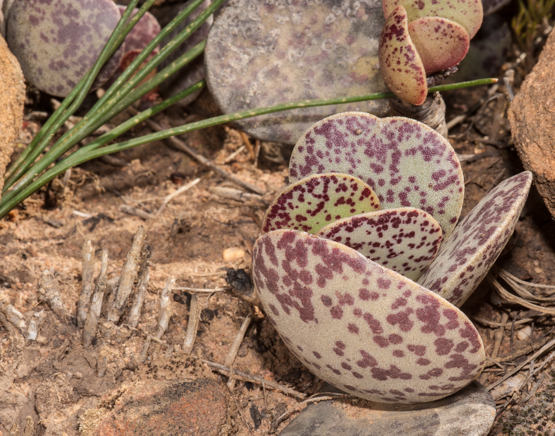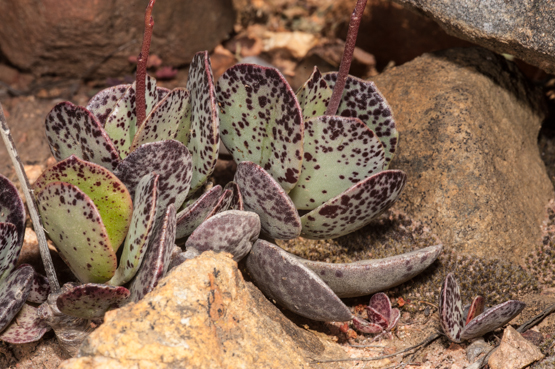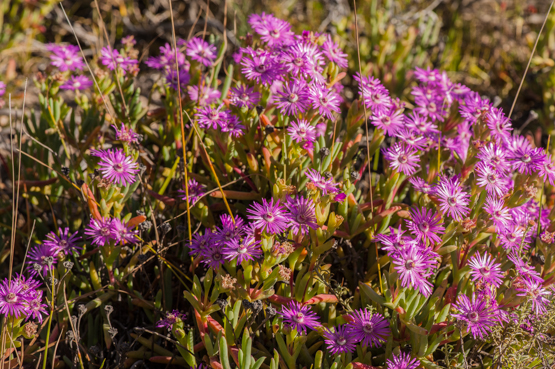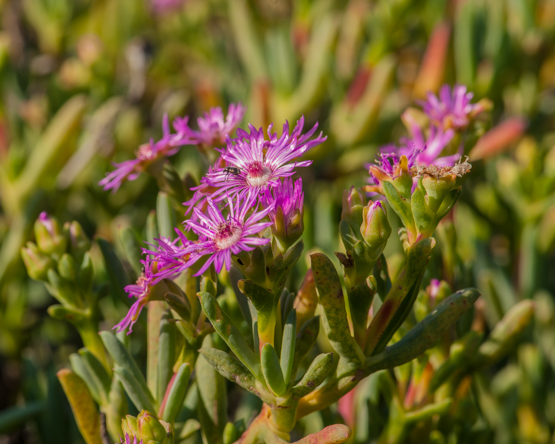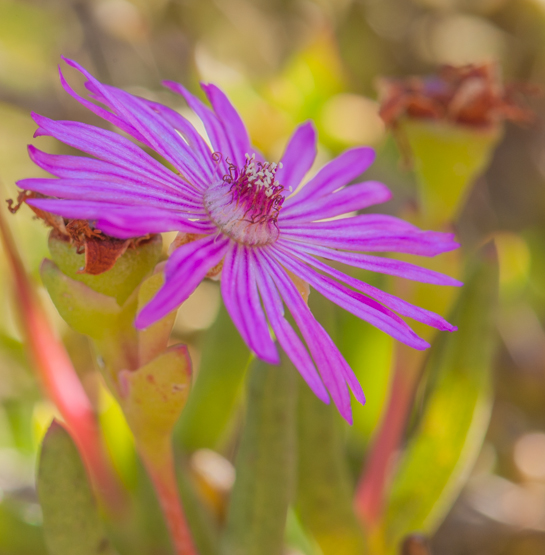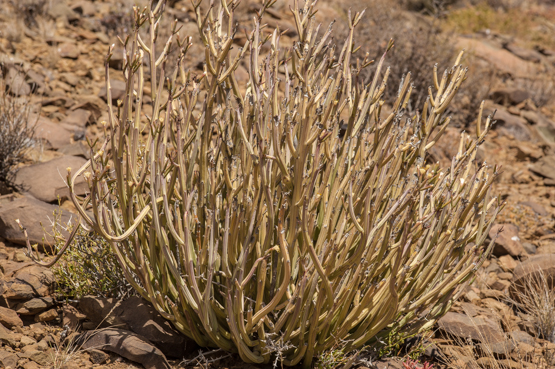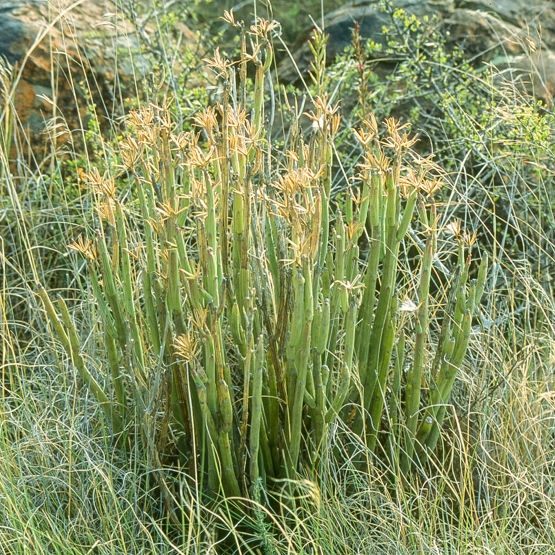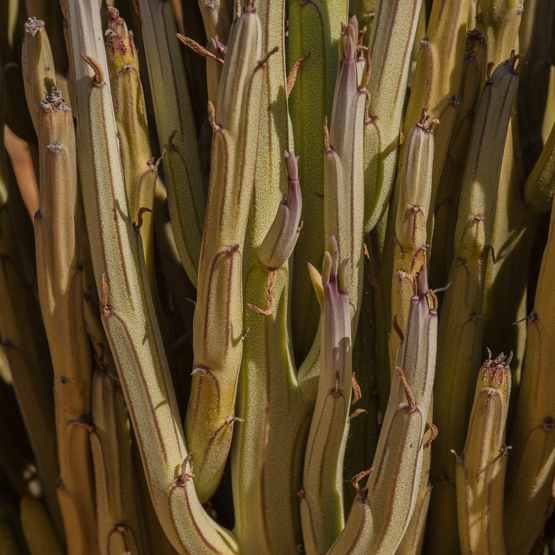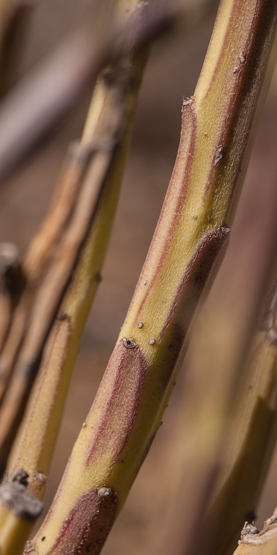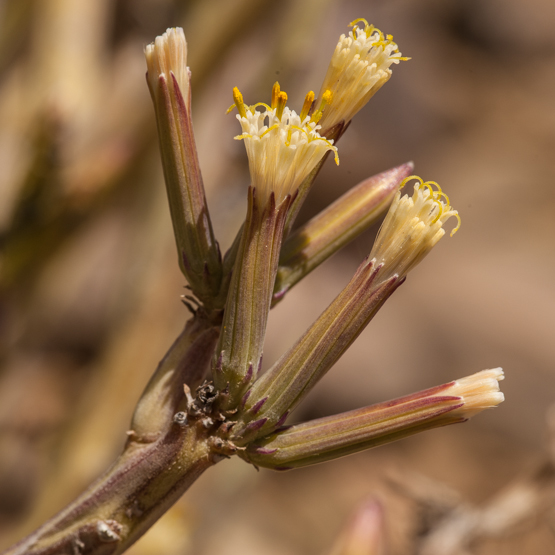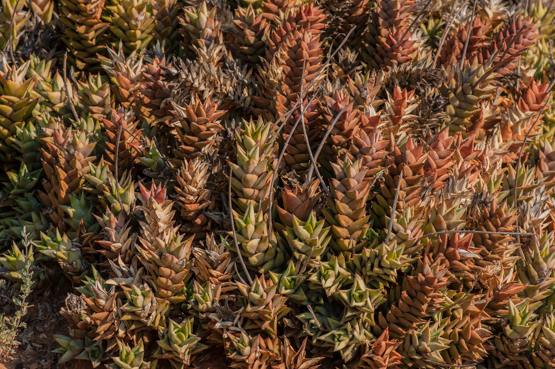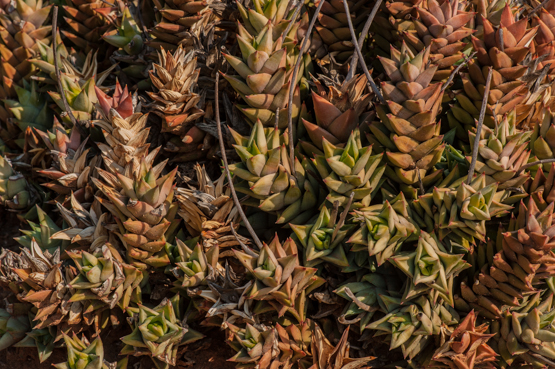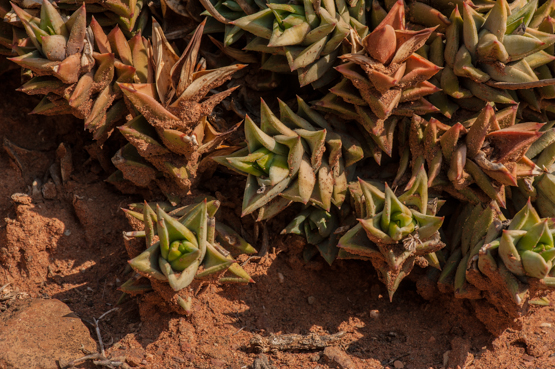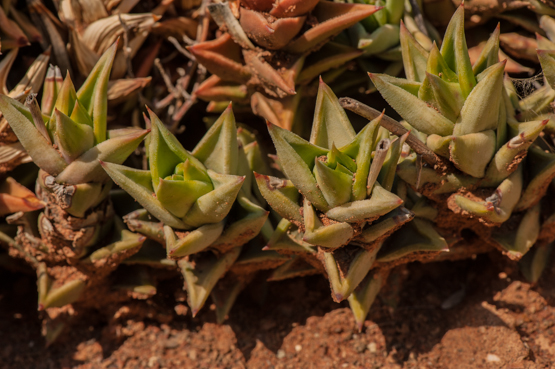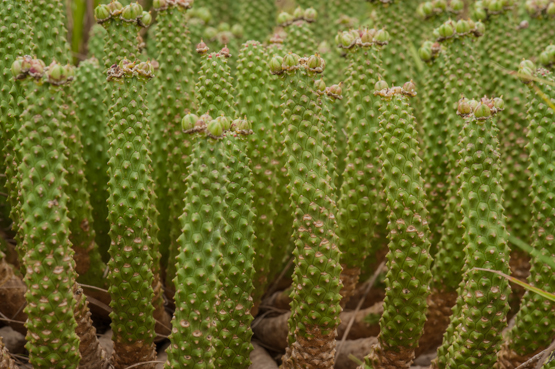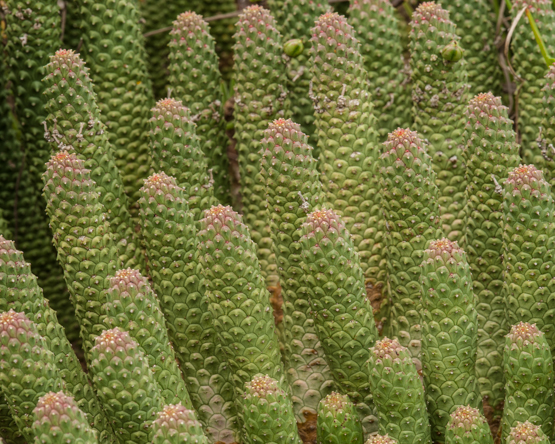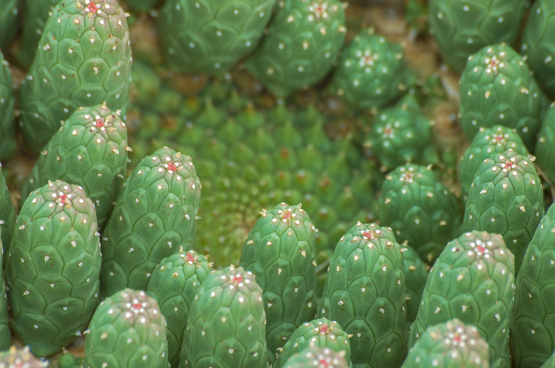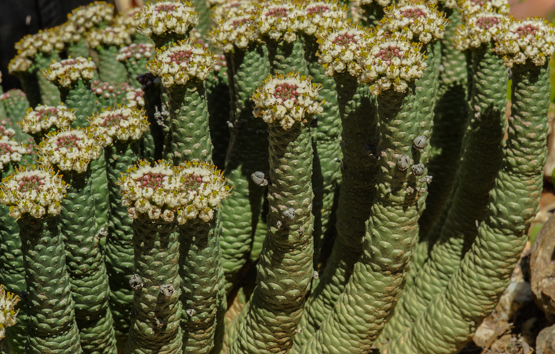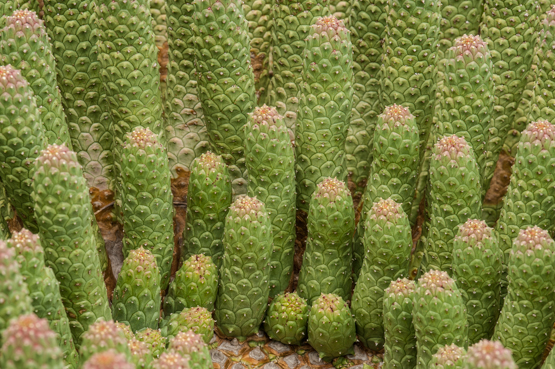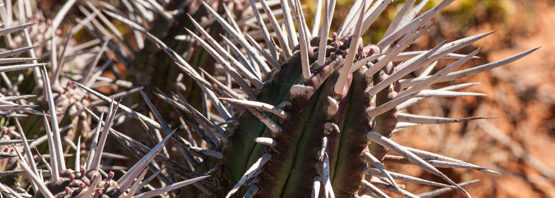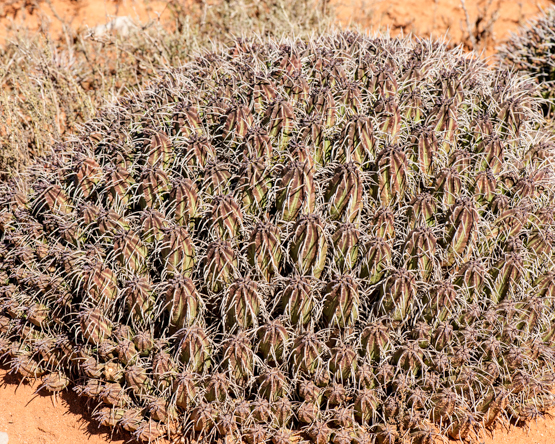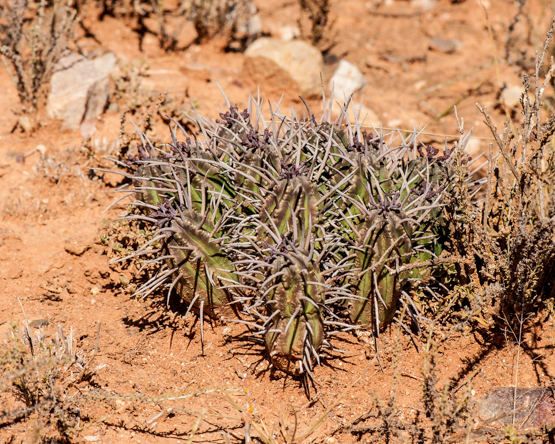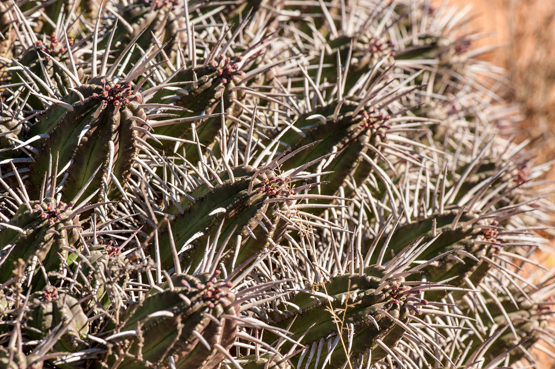The genus name is derived from Greek trix = hair and diadema = crown. This refers to the tuft of stiff hairs or bristles present on the tips of leaves and sepals.
The diadem is believed to be able to absorb dew and rain water. This idea is supported by the fact that in cultivation, where there is usually much more water available to the plants, the diadem is often not well developed.
The crown of hairs can be removed as a whole and is the most characteristic property of the genus. In spite of this, diadems are not present in all species, nor do they all look the same. In most cases the diadem consists of radiating hairs, but in a few species the diadem is a tuft of erect bristles. T. mirabile is a case in point.
The species forms an erect shrublet up to 8 cm tall. The beautiful, pure white flowers are up to 4 cm in diameter and appear from October to January.
The plants can be found on stony slopes from the Laingsburg area to Uitenhage.
